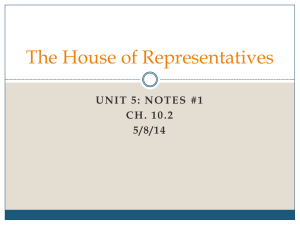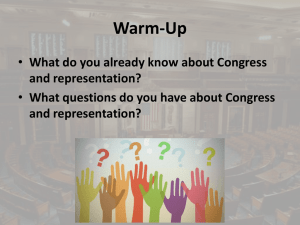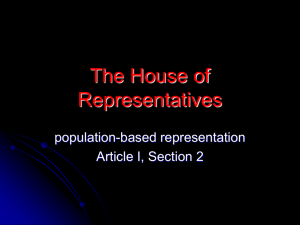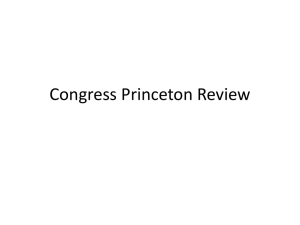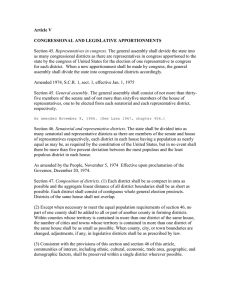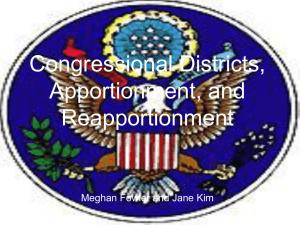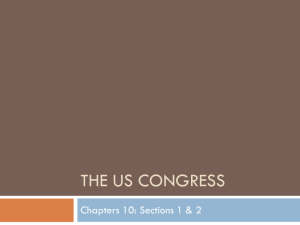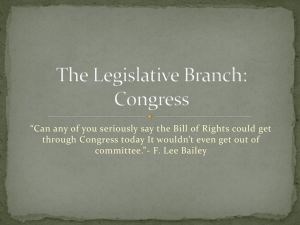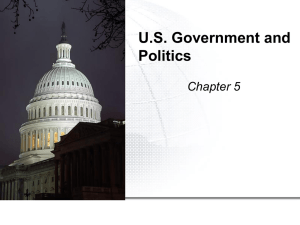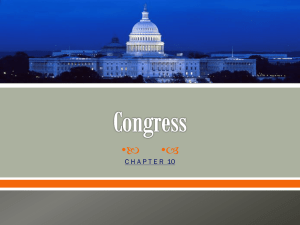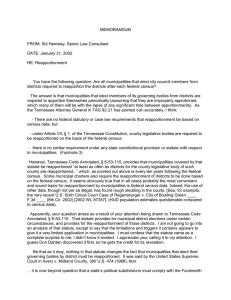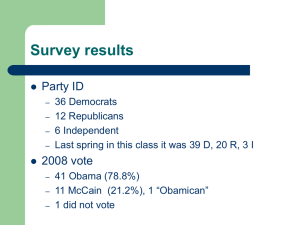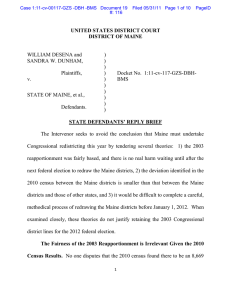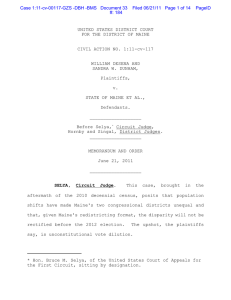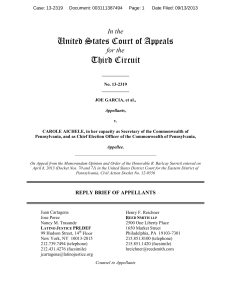Chapter 5: The Organization of Congress
advertisement
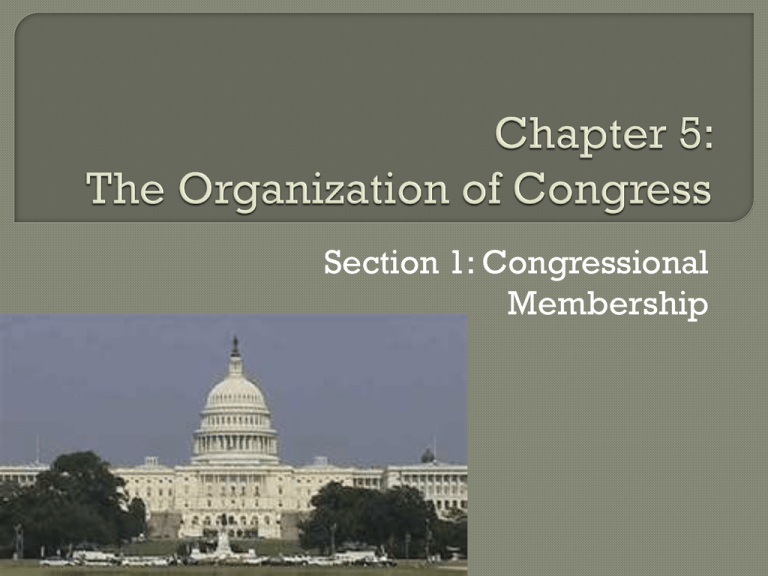
Section 1: Congressional Membership “the First Branch of this Government” Article I of the Constitution Set up • Bicameral legislature- two houses Senate House of Representatives Purpose • Representation • Formulating national policies • Initiating and approving laws Terms • • • • Begin January 3rd, odd-numbered years 2 sessions (session=1 yr) 20th Amendment (1933) Congress opens each session with a prayer (official rules) • Congress remains in session until members vote to adjourn • POTUS may call Congress back for a special session 435 members Qualifications • Set by the Constitution: At least 25 years old Citizen of U.S. for at least 7 years Legal resident of the state that elects them Term of Office • 2 year terms • November elections, even-numbered years • House reorganizes every two years • 90% of representatives are re-elected Representation • Census Bureau Census • reapportionment- reassigning representation based on population. States may lose or gain representation • Reapportionment Act of 1929 Limited House to 435 members Each census determines how these seats will be divided. Congressional Redistricting • Each state sets up congressional districts • Redistricting- the process of setting up new district lines after reapportionment. Most state legislatures draw district line Some abuse this power • Redistrict Cases: Baker v. Carr Wesberry v. Sanders Districts have about 650,000 people 1: Jo Bonner 2: Martha Roby 3: Mike Rogers 4: Robert Aderholt 5: Mo Brooks 6: Spencer Bachus 7: Terri Sewell Means that the political party controlling the state government draws a district’s boundaries to gain an advantage in elections. • Packing- putting as many of the opposing party’s voters as possible into certain districts • Cracking- dividing the opposition into other districts 100 members, 2 from each state Qualifications (set by Constitution) • At least 30 years old • Citizens of U.S. for 9 years • Legal resident of state they represent Term of Office • Elections are at-large • 6 year term • 1/3 of senators run for re-election every two years • • • • • Both houses set their own salaries…. • 27th Amendment Allowances to pay office staff & assistants, trips home, etc. Income tax deductions & pensions Franking privileges- other benefits and resources including stationary and postage for official business. Free from arrest while attending Congress or on the way to Congress • Except in case of treason, felony, or breach of peace • May be censure (vote of formal disapproval) Characteristics • Nearly half of all members are lawyers • Business, banking, and education • Typically white, middle-aged males (CT pg. 129) Reelection • “All members of Congress have one primary interest—to be reelected.” • Incumbents- members already in office Easier to raise campaign funds Gerrymandered districts Better known


